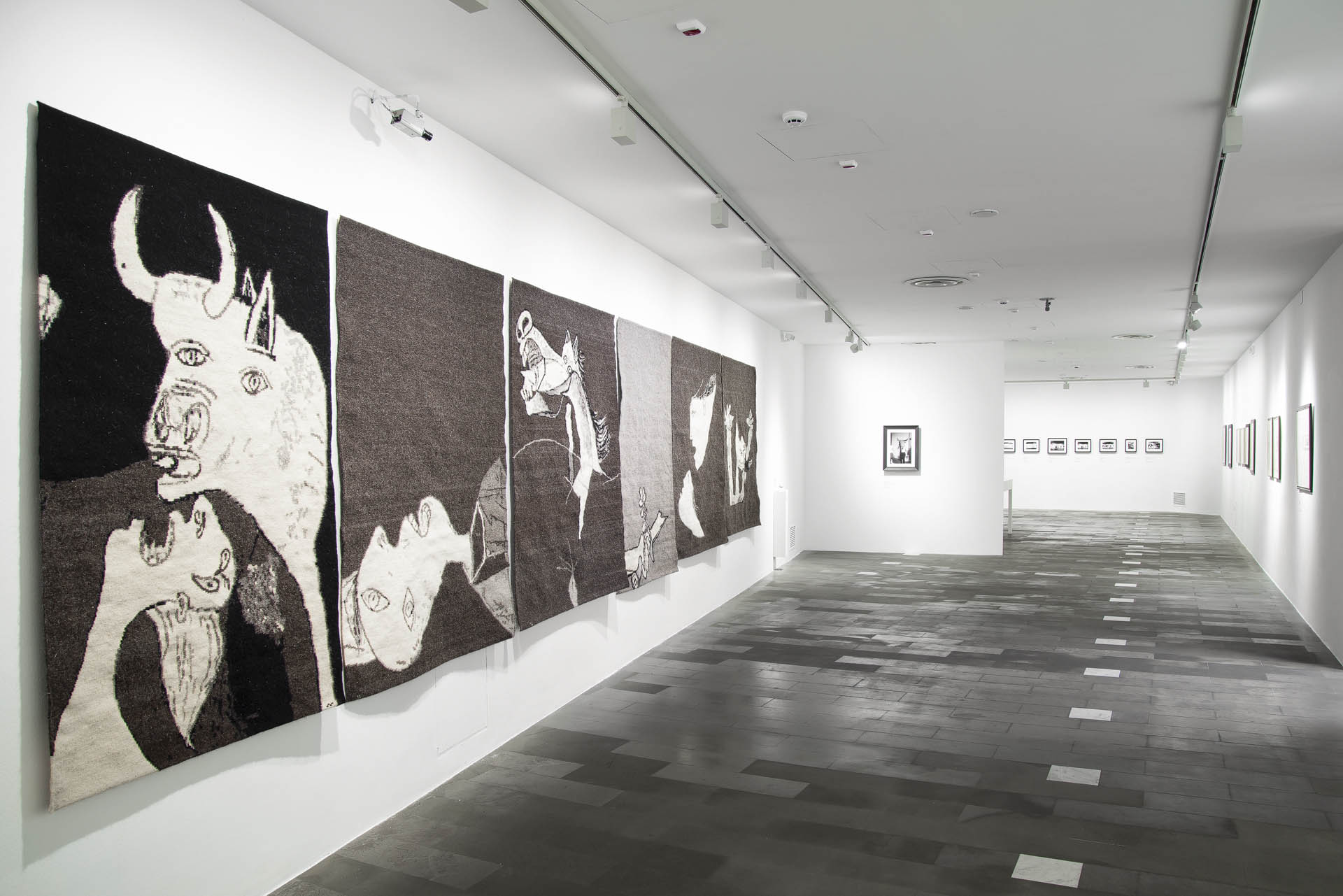edited by Michele Tavola
From September 23rd to December 31st 1953 Guernica was exhibited in Hall of the Caryatids of the Royal Palace of Milan , together with more than three hundred other works by the Spanish master, giving shape to the largest Picasso retrospective ever held in Italy. Subsequently the exhibition was moved to Rome, but in a reduced format and above all without Guernica , which from then on never entered our country again. The Hall of Caryatids, which at the time of hosting Picasso’s masterpiece still showed signs of the bombings of the Second World War, thus amplifying the meaning of the work, on that occasion also hosted other dramatic compositions explicitly denouncing the disasters of war such as the Massacre in Korea And Carnage .
Today Guernica he no longer travels, he never leaves Spain and his room at the Reina Sofía Museum in Madrid. It will no longer return to Paris, where it was created, commissioned by the Spanish Republican government for the 1937 Universal Exhibition, it will no longer return to the MoMa in New York, where it spent a good part of its exile before returning to its homeland, and it certainly will not he will return to Italy again. Seventy years after the historic exhibition at the Palazzo Reale in Milan, the MAN in Nuoro celebrates the Italian passage of Guernica , symbolically and artistically fundamental for a generation of artists, art critics and Italian citizens.
The Nuorese homage is divided into two main sections: the echo of Guernica in Picasso’s artistic production and the story of the genesis of the work through the visual story of Dora Maar, photographer and companion of the Spanish artist at the time.
The first section finds its main focus in the extraordinary diptych of engravings entitled Franco’s voice and lie , a true graphic counterpart of the large painting. Picasso began engraving the first plate in January 1937 but soon abandoned the work. In the month of May, just after the tragic bombing of the Basque town, he completed both matrices just as he was executing the monumental canvas, using the same studies and the same ideas. However, it is not at all a small version of the painting, but an original invention in its own right, which is inspired by the same thought and the same creative impetus. Around Franco’s voice and lie we will collect a small but significant series of engravings, drawings and paintings that directly relate to the gestation of Guernica or which, having been created in the same period, closely recall the style and themes of the famous painting.
The second soul of the exhibition would revolve around the extraordinary testimony of Dora Maar, who documented Picasso’s work day by day, with her own photographs. It is a series of shots that are both moving and fundamental for the philological reconstruction of the creation of Guernica . There will also be no shortage of images taken in 1953 by Mario Perroti on the occasion of the Milanese exhibition, in the touching display of the Hall of Caryatids marked by bombing, a tragic situation that convinced Picasso to exhibit his masterpiece in that context so similar to the soul of the painting.
The ideal project of the exhibition will also include a documentary section that will make the journey of the highest quality, completing the narrative in an anniversary that Italy is called to celebrate and of which the MAN Museum of Nuoro would be the leader.

